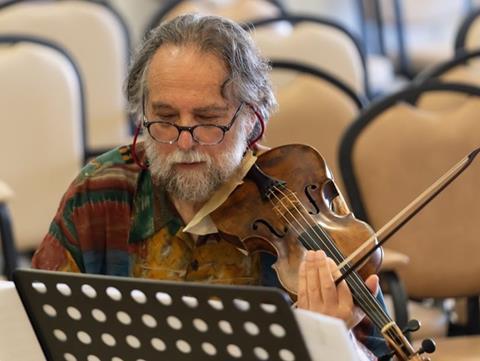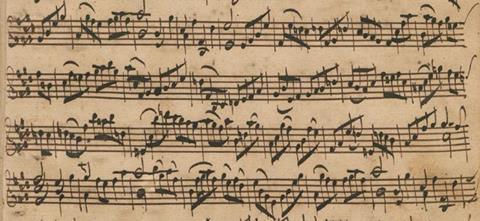The violinist offers tips on how narrate emotions through the bow when playing Baroque music

The following extract is from The Strad’s September 2021 issue feature on historically informed performance. To read it in full, click here to subscribe and login. The September 2021 digital magazine and print edition are on sale now
Exercises to improve Baroque playing taken from The Baroque Violin & Viola: A Fifty-Lesson Course (2020) by Walter S. Reiter
Activating emotions on demand (See figure 1)
1. Play the following notes with a minimum of emotional input.
2. On your ‘emotional keypad’, switch on each of the emotions listed below in turn. When you are satisfied that you are intensely feeling the selected emotion, play the figure again. Observe to what extent the different emotions you are experiencing influence tempo, dynamics, bow speed, articulations etc.
Joy, Anger, Sorrow, Pity, Love, Doubt, Exuberance, Anxiety, Regret.

Ensuring that the bow is speaking clearly (See figure 2)
1. Play through bars 48–64 of the Gavotte from Bach’s E major Partita BWV1006 on a single open string, reproducing the bowings, rhythms, nuances and stresses – everything in fact, except the actual notes. Ensure that your bow is speaking clearly. Highlight the good notes and underplay the bad ones, enunciate the consonants, sing the vowels and shape the dynamic contours. Your aim is to narrate the story line of the episode convincingly.
2. When the bow is speaking to your satisfaction, play with the notes as written. Ensure that the speaking of the bow is in no way diminished by the addition of the real notes.

Read: The rhetorical nature of Baroque music: learning to speak with the bow
Read: Historically informed performance: Baroque revolution
Read: Ask the Experts: what to look for in a Baroque bow
-
This article was published in the September 2021 Suzuki issue
How the intuitive teaching method has become an unparalleled success around the globe since its founding in 1945. Explore all the articles in this issue
More from this issue…
- The Suzuki teaching method
- Why conservatoires should embrace HIP
- The great antiquing debate: experts weigh in
- Violin making and AI
- Soviet cellist Daniil Shafran
- Choosing the right sized viola
Read more playing content here
-



































No comments yet